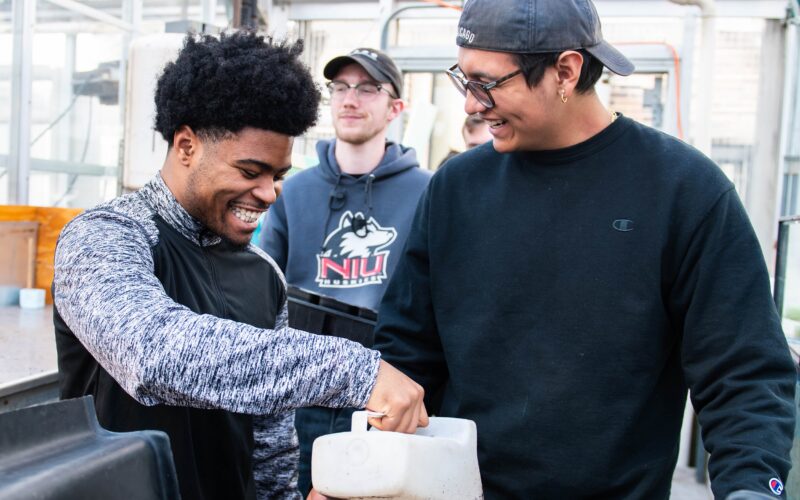Transdisciplinary and interdisciplinary approaches to teaching and learning offer occasions to consider the same issue from different disciplinary perspectives. However, transdisciplinarity provides opportunities to transcend individual disciplines in order to collaborate to construct knowledge and create solutions to global issues.
What is “Interdisciplinarity”?
Interdisciplinary teaching means teaching across disciplines, generally by using a common theme, topic, or issue. A single disciplinary approach has limitations, particularly as it is concerned with the norms of that one particular discipline, ignoring other disciplines’ contributions to the issue or potential solutions. Through interdisciplinarity, students can look at the same theme, issue, or topic from the perspectives of different, individual disciplines.
 What is “Transdisciplinarity”?
What is “Transdisciplinarity”?
Transdisciplinary teaching moves beyond just teaching across disciplines using common themes, topics, or issues that thread through different courses. Transdisciplinarity requires collaboration between disciplines to create a cohesive curriculum in which students collaborate to solve multifaceted problems. Transdisciplinarity requires innovation, cooperation, and intentionality.
Challenges and Considerations
Institutional challenges to implementing transdisciplinary programs include the complexities in coordinating such programs, buy-in from administration, the time and effort involved in putting programs together, funding concerns, and recruiting stakeholders from within divisions and departments.

Divisional challenges include the requirement of cooperating and coordinating between different disciplines and creating cohesiveness across the program. Additionally, transdisciplinarity requires merging divergent knowledge bases and value systems to create a new understanding of an issue or challenge and its potential solutions. Therefore, the complexities involved in coordinating and managing these programs can be a daunting undertaking.
Departmental challenges include the time-intensive nature of transdisciplinary programs, the leadership and cooperation skills necessary to implement each piece of the program and synchronize efforts interdepartmentally, the intensely collaborative nature of transdisciplinarity for all stakeholders, and the need to consider problems from different perspectives and appreciate different disciplines’ approaches and values.
Strategies and Approaches
A transdisciplinary program should begin by identifying a complex, multifaceted, global problem (e.g., Global Grand Challenges, National Academy of Engineering Grand Challenges, Humanitarian Grand Challenge, etc.) in collaboration with disciplines that could work together on composite solutions to the challenge.
Within each discipline, educators must establish a foundation for students for how their discipline thinks; in other words, students must be taught how to think (critically) inside the proverbial disciplinary box before being asked to think (critically) outside of it.
Another step in developing a transdisciplinary program is identifying collaborative partners and fostering collaboration institutionally, divisionally, and departmentally (i.e., providing multiple layers of support and connection).
 Most importantly, stakeholders must work together to develop a transdisciplinary curriculum. Within the curriculum, collaborators should identify ways to help students develop a deep understanding of different perspectives and explore the challenge through different lenses. The curriculum should provide regular opportunities for students to tackle questions from multiple disciplinary perspectives and connect those efforts.
Most importantly, stakeholders must work together to develop a transdisciplinary curriculum. Within the curriculum, collaborators should identify ways to help students develop a deep understanding of different perspectives and explore the challenge through different lenses. The curriculum should provide regular opportunities for students to tackle questions from multiple disciplinary perspectives and connect those efforts.
Finally, when developing the program, ensure the curriculum is transdisciplinary rather than interdisciplinary. In other words, a transdisciplinary program should involve collaboration and connection between disciplines rather than just a shared theme taught independently within individual disciplines.
 The Applicability of Transdisciplinarity
The Applicability of Transdisciplinarity
In their 2020 Future Work Skills report, The Institute for the Future think tank emphasizes the need for the skills transdisciplinarity develops: “Many of today’s global problems are just too complex to be solved by one specialized discipline (think global warming or overpopulation). These multifaceted problems require transdisciplinary solutions. While throughout the 20th century, ever-greater specialization was encouraged, the next century will see transdisciplinary approaches take center stage.” They describe the desired future workers as needing to “speak language of multiple disciplines,” with an in-depth understanding of one or more fields but also able to “converse in the language of a broader range of disciplines.”
In sum, transdisciplinarity provides students with key skills and complexity of thought that employers are seeking in a future workforce, and well-developed transdisciplinary programs in higher education provide students with unique opportunities to develop these skills.
Resources and References
Dennison, B. (2017, March 6). Transdisciplinary literacy: Seven principles that help define transdisciplinary research. UMCES integration and application network. https://ian.umces.edu/blog/2017/03/06/transdisciplinary-literacy-seven-principles-that-help-define-transdisciplinary-research/
Frodeman, R. (Ed.). (2017). Oxford handbook of interdisciplinarity. Oxford University Press. https://www.oxfordhandbooks.com/view/10.1093/oxfordhb/9780198733522.001.0001/oxfordhb-9780198733522
Gibbs, P. (Ed.). (2017). Transdisciplinary higher education: A theoretical basis revealed in practice. Springer. DOI 10.1007/978-3-319-56185-1
Levinson, M. (2016, January 21). Transdisciplinarity: Thinking inside and outside the box. Edutopia. https://www.edutopia.org/blog/transdiciplinarity-thinking-inside-outside-box-matt-levinson
Millar, V. (2016). Interdisciplinary curriculum reform in the changing university. Teaching in Higher Education, 21(4), 471-483. http://dx.doi.org/10.1080/13562517.2016.1155549
Nikitina, S. (2006) Three strategies for interdisciplinary teaching: contextualizing, conceptualizing, and problem‐centring. Journal of Curriculum Studies, 38(3), 251-271. https://doi.org/10.1080/00220270500422632
Science Education Resource Center at Carleton College. (2018, May 7). What is interdisciplinary teaching? Pedagogy in action. https://serc.carleton.edu/sp/library/interdisciplinary/what.html


